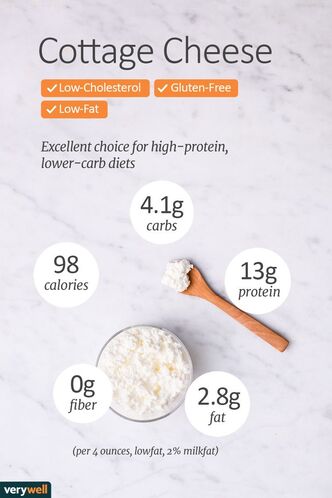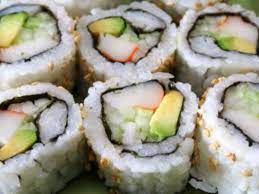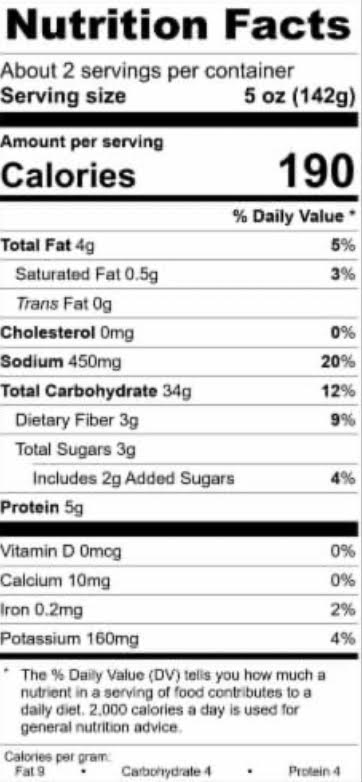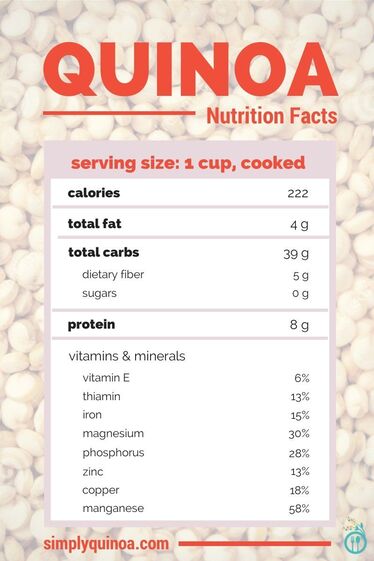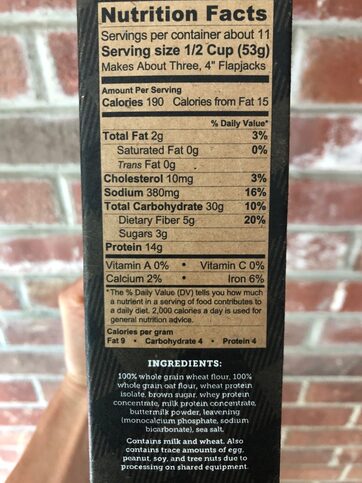0 Comments
 If you're like me, you are probably thinking "whyyyyyyyyy????" I am a firm believer that I should be able to ENJOY myself during the Holiday break, and that includes eating ALL of the things that I want. I am also a realist. I know that every food that goes into my body will affect me on a cellular level. So, here are a few tricks to put in your cap during the Holiday. They are not scary tricks, there is no witchcraft here, and before you get any further, YES you can enjoy your favorite holiday treat ;) #1 Eat slowly. I know this is probably a tip you see and think about all the time. But it's true! Eating slowly allows our mouth to break down food so that we can better absorb the nutrients we are eating. The more nutrients we absorb, the better our bodies feel, and overall we tend to eat less. #2 The 5 Minute Rule. I'll be honest, this is the one I struggle with most... Once I eat that first cookie a MONSTER inside me emerges and I become a sugar junkie. The goal here is to wait 5 minutes between sweets. Don't kid yourself and try not to eat sweets at all... This is the holidays! You deserve it! But wait 5 minutes before grabbing the second, third, fourth, and eighth cookie. #3 PROTEIN PROTEIN PROTEIN. When in doubt, if you are still feeling hungry or overstimulated and stress eating, try opting for the protein. This might be the most challenging trick of them all, but you will get full on protein faster than cookies, and your body will tell you to stop eating it much sooner than with cookies. Enjoy that honey ham! It's almost as sweet as the apple pie. This is the time of the year for family and fun, don't stress about food this week, there are 51 other weeks to think about that. Have a great time and keep these few tricks handy (just in case that monster emerges in you too). Have questions? Send us an email:
[email protected] Enjoying our content? Give us a like on Facebook or Instagram! @CrossFitAFK
How can you make this a little more well rounded? Well, we need to supplement protein and fat... What better way to supplement a protein/fat than a couple slices of BACON! I would pair 2 thick cut slices or 3 thinner cut slices with my giant pancake. Voila! 4 block delicious pancake breakfast!
Comment below with some of your favorite snacks and we will choose some to add to the website all Zone'd out for you :) Nutrition and exercise go hand in hand. Fitness cannot be fully achieved unless both pieces are working together. Nutrition includes anything that your body ingests, including fitness drinks. Protein drinks are very popular among exercise communities, they are a great way to jump start the recovery process after exercise. Getting into this habit can be very useful when executed in a manner that is consistent with how foods are consumed during the time exercise is not happening (i.e. the rest of the day). We consider a protein drink to be part of a recovery “snack” that the body can use immediately after completion of a workout, but the protein drink is only one part of this post-workout snack. We encourage that you pair a whole fruit and a few nuts along with your post-workout protein drink. The protein will start to repair your muscles, and the carbohydrate and fat will help replenish your energy levels. Try this: 1 scoop of your favorite protein powder 1 large apple/banana/grapefruit/orange (etc.) 1 small handful of your favorite nut Stay consistent in this habit for a few weeks and let us know how you are feeling in the comments! Have questions? Send us an email:
[email protected] Enjoying our content? Give us a like on Facebook or Instagram! @CrossFitAFK Powerade and Gatorade drinks do not help with hydration. We have all seen the commercials about how Gatorade and Powerade help you hydrate and replenish electrolytes after exercise, but that is not true. One study found that the beverage that an athlete drinks after short or prolonged exercise does not matter because hunger mechanisms will kick in, and food is the most effective way to replenish those lost electrolytes. In general, humankind was at its fittest when there were hunter-gathers who had to navigate rough terrain, climb trees, and maintain strength to carry home the meat they hunted. Back in those days, there was no Coca-Cola and Pepsi Co. to push their sugary propaganda. What did those people drink? Water. The best way to hydrate is water, and the best way to recover is by using the CrossFit protocol to fuel your body. Meat, veggies, nuts and seeds, some fruit, little starch, and no sugar (even in “recovery” drinks). Sources: You Don’t Need Sports Drinks To Stay Hydrated | FiveThirtyEight Have questions? Send us an email:
[email protected] Enjoying our content? Give us a like on Facebook or Instagram! @CrossFitAFK Back to the basics “Eat meat and veggies, nuts and seeds, some fruit, little starch, and no sugar”4/1/2021 The phrase “Eat meat and veggies, nuts and seeds, some fruit, little starch, and no sugar,” embodies a balanced diet without tying down to specific foods. This phrase can guide someone early on in their nutrition journey to make the steps toward overall eating better. It can be memorized and remembered in the kitchen and the grocery store. When thinking nutritious food, think “meat, veggies, nuts and seeds, some fruit, little starch, and no sugar.” These thoughts can be powerful in helping us make healthful decisions about our food. Let’s break this phrase down: - Meat is a primary source of all essential amino acids. These are the proteins our body needs to function, and we cannot make them on our own. Consuming these amino acids is possible with a meatless diet, but as far as efficiency goes, meat works faster and better. Veggies have amino acids, but not all in the same place. Some work needs to be done to balance these veggies out to get all the required proteins in your diet. - Veggies are on the good side of the glycemic index as a carbohydrate which means hormone levels are more stable and sustainable when we eat vegetables. When vegetables are used as the primary carbohydrate in a diet, there is no need to worry about “carb counting.” You will quickly become full before you reach your daily allotment, especially if you are physically active. - Nuts and seeds are a powerful source of fat. Fat is full of energy and can quickly balance out a diet or meal full of protein and carbs. - “Some” fruit, but how much? Let’s keep it simple and say, “less fruits than vegetables.” Fruits have plenty of antioxidants, vitamins, and some minerals, but if the plate has the appropriate veggies on it, then some fruit is good for a sweeter variety of carbohydrates. - Little starch is on the other side of glycemic index. Like with fruit, a quick way to think about amount to have it should be the smallest portion of carbohydrates you consume. - No sugar is tough (especially because carbs are all technically sugar). What this really means is no added sugar. Limit the amount of extra sugar added to drinks and common junk foods because there is already plenty in your fruits, veggies, and starches. Have questions? Send us an email:
[email protected] Enjoying our content? Give us a like on Facebook or Instagram! @CrossFitAFK There is no “one size fits all” with nutrition. There is, however, a very effective way to find the diet that fits you. We have some tips and tricks for making changes to your diet to find what best suits your lifestyle. All the previous posts should be applied for several weeks before making any more significant changes. The first major tip is to eliminate most foods from your diet and gradually start adding foods back in. You may find that some foods affect your body more negatively. For example, maybe after introducing cheese back into your diet you may find that you have less energy overall. If this is the case, you may consider excluding or reducing cheese as much as possible. The second tip is to take the primary exercise you do into consideration. If you are a longer-more endurance athlete, you might consider increasing your fat intake and decreasing your carbohydrate intake. If you are a high-power athlete, like a sprinter or powerlifter, you might consider slightly increasing your carbohydrate intake and decreasing your fat intake. If you are just a feel-it-out as you go type athlete, but you are noticing a decrease in energy, you might consider adding more fat to your diet and decreasing carbohydrates. You may also find that these suggestions are not beneficial to you – which is okay too! Again, there is no “one size fits all” with nutrition. We encourage you to start by resetting your diet with predominately proteins / fruits / vegetables for a few weeks, and let your body tell you what you need. Have questions? Send us an email:
[email protected] Enjoying our content? Give us a like on Facebook or Instagram! @CrossFitAFK In this post we will show you some common fats and how to weigh them to get one block of fat. If you need a refresher on fats, you can skip back to “another way to count calories part five – what is fat and how much is one block.” ** If your main source of protein is animal protein, one block of fat will only be 1.5g of fat instead of 3g. This is because many animal proteins have some fat, so we only need to supplement plant-based proteins with 3g of fat. Fats listed below will have two different numbers. A block for those who eat animal protein (A) / and a block for those who have plant-based protein (P). Nuts & Seeds (A/P) Pistachios – 5 nuts / 10 nuts Peanuts – 3 nuts / 6 nuts Almonds – 3 nuts / 6 nuts Pecans – 1.5 nuts / 3 nuts Sunflower seeds – 3g / 6g Flax seeds – 1 tsp whole seeds / 2 tsp whole seeds Butter/Oils (A/P) Olive oil – 1/3 tsp / 1/5 tbsp Coconut oil – 1/3 tsp / 1/5 tbsp Vegetable oil – 1/3 tsp / 1/5 tbsp Butter – 1/8 tbsp / 1/4 tbsp Remember, these are only per one block. Most meals are going to require between 3 and 5 blocks of fat – meaning you will have to multiply this number by 3-5 to get the desired amount of blocks of fat. Have questions? Send us an email:
[email protected] Enjoying our content? Give us a like on Facebook or Instagram! @CrossFitAFK In this post we will show you some common carbohydrates and how to weigh them to get one block of carbs. If you need a refresher on carbs, you can skip back to “another way to count calories part four – what are carbohydrates and how much is one block.” There are far too many different carbohydrates to break down in one post, so we have just picked a few of our favorite carbohydrates to compare. Fruits Apples – 75g per block (appx ½ of a small apple) Bananas – 50g per block (appx ½ of a small banana) Strawberries – 150g per block (appx 1 cup) Vegetables Red potatoes – 56g per block (appx 1/3 of small potato) Sweet potatoes – 56g per block (just over ½ of sweet potato) Corn on Cob – 50g per block (appx ½ an ear of corn) Carrots – 110g per block (appx 1 cup) Broccoli – 215g per block (just over 2 cups) Asparagus – 500g per block (appx 31 medium spears) Brussel Sprouts – 170g per block (appx 2 cups) Green Pepper – 310g per block (appx 2.5 medium peppers) Grains Brown Rice (cooked) – 42g per block (appx 1/5 of a cup) Wild Rice (cooked) – 50g per block (appx 1/3 of a cup) Oatnut Bread – 19g per block (appx ½ a slice of bread) Remember, these are only per one block. Most meals are going to require between 3 and 5 blocks of carbohydrates – meaning you will have to multiply this number by 3-5 to get the desired amount of blocks of carbs. Have questions? Send us an email:
[email protected] Enjoying our content? Give us a like on Facebook or Instagram! @CrossFitAFK In this post we will show you some common proteins and how to weigh them to get one block of protein. If you need a refresher on proteins, you can skip back to “another way to count calories part three – what is protein and how much is one block.” Cooked Chicken: Deli – 36g per block Breast – 22g per block Drumsticks – 25g per block Thigh – 27g per block Wing – 23g per block Egg – 1 large egg per block Cooked Turkey: Ground– 28g per block Deli– 44g per block Breast – 23g per block Cooked Beef: Ground beef (90/10) – 34g per block Sirloin steak – 26g per block Ribeye steak – 29g per block Chuck – 28g per block Cooked Pork: Steak – 26g per block Bacon – 21g per block Sausage – 36g per block Deli ham – 56g per block Cooked Fish: Salmon – 35g per block Canned tuna – 33g per block Flounder – 29g per block Freshwater bass – 30g per block Plant-Based: Soybeans – 19g per block Raw broccoli – 295g per block Cooked quinoa – 159g per block Cooked lentils – 77.6g per block Peas – 140g per block Remember, these are only per one block. Most meals are going to require between 3 and 5 blocks of protein – meaning you will have to multiply this number by 3-5 to get the desired amount of blocks of protein. Have questions? Send us an email:
[email protected] Enjoying our content? Give us a like on Facebook or Instagram! @CrossFitAFK In this post we are going to show you how to calculate how many blocks of food you should be eating per day using a very precise method involving lean body mass. The preferred method of finding your lean body mass is to get a full InBody or another body composition scan. You can go to the InBody website to find an InBody scanner near you. If you do not have access to a body composition scanner, the less-preferred method is to use a Body Fat Calculator. We suggest using Zone’s Body Fat Calculator. This calculator will estimate your body fat percentage, lean body mass, and the amount of Zone blocks recommended based on your hip/waist ratio and activity level. To manually calculate blocks, you will rate how active you are on a scale of 0.5 to 1.0. 0.5 Sedentary: No sport activity or training. 0.6 Light Activity: Light training, such as walking. 0.7 Moderate Activity: Fitness or sport 3x per week. 0.8 Active: Daily fitness training 0.9 Very Active: Intense daily workouts 1.0 Athlete: Intense daily workouts AND sport training. *You may also fall into this category if you have a very physically demanding job. Once you have determined your lean body mass and activity level, we can get into calculating blocks. To do this, use the following equation: Lean Body Mass (in lbs.) x Activity Level / 7g of protein and be sure to round the number up. For example, if you get 11.1 blocks, you will round that to 12. While this does defy regular rounding rules, by rounding up you ensure that your body is receiving all of the energy it needs to help you feel best (plus it’s a difference of less than 100 calories). All of our macros are based around protein, for more on this visit “Another way to count calories part three – what is protein and how much is one block.” Examples: A firefighter with a lean body mass of 145 who has a physically demanding job and does intense daily workouts would be considered 1.0 athlete. 145 * 1.0 / 7 = 21 blocks per day (rounding up) A teacher who has a lean body mass of 120 and always makes sure to get 10,000 steps would be considered 0.6 light activity 120 * 0.6 / 7 = 11 blocks per day (rounding up). Sources: https://www.zonediet.com/resources/body-fat-calculator/ https://www.vittle.ca/vitality/diets/What-is-the-Zone-Diet:-What-Foods-to-Eat-and-How-it-Works Have questions? Send us an email:
[email protected] Enjoying our content? Give us a like on Facebook or Instagram! @CrossFitAFK Fat is the last of the three macronutrients that our bodies need daily. Fat is important to give your body long-lasting energy. Think about fat like a burning candle, the flame is small but lasts for several hours. There are two normal types of fat. Saturated fat which is from most animal products like meat, cheese, and butter. Unsaturated fat is found in nuts and seeds, as well as avocado and fish. Eating fats is essential for keeping our meals balanced which keeps our metabolism in homeostasis. These different fats are linked to regulating hormones involved with body composition and hunger, as well as cholesterol levels especially related to immune system strength. Like with proteins and carbohydrates, its always better to avoid versions of fat that are processed, like vegetable oils. Eating foods that naturally contain or produce fat is always a healthier choice. For the most part we want to eat fat in a balanced portion compared to our carbs and protein. We can determine how much fat to eat per day after our protein amount has been established using the Zone calculations. This amount is measured in “blocks.” We should not alter overall protein much because protein is directly related to recovering muscles. We can, however, play with carbohydrates and fat because both carbohydrates and fat are directly related to energy expenditure. Fat is the preferred fuel for longer more endurance-like workouts. In every block of food there is 3 grams of fat. Since many proteins also contain fat, we must measure it in two different scenarios. If you are eating a lean meat like chicken, turkey, or fish, you will need to add 3 grams of fat per block to your meal. If you are eating a fatty meat like pork or beef, you will only add 1.5 grams of fat per block to your meal. Try looking at some nutrition labels and see how many blocks of fat you are eating per day. There is a new variation of the “Block Prescription Based on Sex and Body Type” chart at the bottom of this post showing how many grams of fat you should be eating daily based on sex and body type. Small female: 30g fat per day (10 blocks of fat) Medium female: 33g pr fat per day (11 blocks of fat) Large female: 39g fat per day (13 blocks of fat) Athletic, well muscled female: 42g fat per day (14 blocks of fat) Small male: 48g fat per day (16 blocks of fat) Medium male: 51g fat per day (17 blocks of fat) Large male: 57g fat per day (19 blocks of fat) X-Large male: 60g fat per day (20 blocks of fat) Large hard gainer: 63g fat per day (21 blocks of fat) Athletic, well muscled male: 75g fat per day (25 blocks of fat) Sources: https://www.hsph.harvard.edu/nutritionsource/what-should-you-eat/fats-and-cholesterol/types-of-fat/ https://bmjopen.bmj.com/content/6/6/e010401 Have questions? Send us an email:
[email protected] Enjoying our content? Give us a like on Facebook or Instagram! @CrossFitAFK Another way to count calories part four - what are carbohydrates and how much is one block.2/4/2021 Carbohydrates are the second of three macronutrients that our bodies use daily. When carbohydrates are consumed, the energy that the body obtains from them is used immediately. Think of carbs like throwing gas on a fire – you get a huge burst of energy that runs out quickly. Carbs are placed on linear scale based on their insulin response on the body. This scale is the glycemic index and it runs from simple carbs to complex carbs. The insulin response on the body correlates with starchiness, nutrient density, and other metabolic effects on the body like leptin and ghrelin hormones control of hunger. Simple carbs are typically higher in sugar like breads, chips, rice, and fruits. These are going to also be starchier and have less nutrients overall when compared to complex carbs. Complex carbohydrates would be most vegetables, especially vibrant colors, and dark greens. We can determine how many carbohydrates to eat per day after our protein amount has been established using the Zone calculations. This amount is measured in “blocks.” The way Zone spreads calories among the macronutrients, 40% carbohydrates, 30% fat, 30% protein, is an excellent baseline rule for anyone starting to work on nutrition. The number of grams in protein should not be altered by much, but carbohydrates and fat have a bit of wiggle room. Some people may feel better by eating less carbohydrates and more fat, or vice versa. Particularly, athletes who work more with fast workouts or heavy lifting may respond better to increasing carbohydrates to fuel their workout regimen. In every block of food there is 9 grams of carbohydrates. Try looking at some nutrition labels and see how many blocks of carbohydratesyou are eating per day. There is a new variation of the “Block Prescription Based on Sex and Body Type” chart at the bottom of this post showing how many grams of carbs you should be eating daily based on sex and body type. Small female: 90g carbohydrates per day (10 blocks of carbohydrates) Medium female: 99g pr carbohydrates per day (11 blocks of carbohydrates) Large female: 117g carbohydrates per day (13 blocks of carbohydrates) Athletic, well muscled female: 126g carbohydrates per day (14 blocks of carbohydrates) Small male: 144g carbohydrates per day (16 blocks of carbohydrates) Medium male: 153g carbohydrates per day (17 blocks of carbohydrates) Large male: 171g carbohydrates per day (19 blocks of carbohydrates) X-Large male: 180g carbohydrates per day (20 blocks of carbohydrates) Large hard gainer: 189g carbohydrates per day (21 blocks of carbohydrates) Athletic, well muscled male: 225g carbohydrates per day (25 blocks of carbohydrates) Have questions? Send us an email:
[email protected] Enjoying our content? Give us a like on Facebook or Instagram! @CrossFitAFK Protein is one of three macronutrients that our bodies need daily. Protein is important for your body to keep, repair, and build muscle among other valuable physiological processes. Your body can only process so much protein before starting to create fat. Alternatively, your body will eat muscle when protein is not being supplemented properly. If the body receives the nutrients to keep muscles strong and healthy, we can make small changes to other nutrients to complement our muscles. The Zone uses protein as a baseline to determine how much food should be eaten per day. This amount is measured in "blocks." Zone blocks are based on your body’s lean muscle mass, which includes bones, organs, and muscle (basically everything in your body except fat). With the Zone method, we can estimate lean body mass and precisely eat the amount of protein to allow muscles to repair everyday wear and tear. Zone also brings activity level into the equation, so athletes who are working their muscles harder and more often are also consuming enough protein to supplement that lifestyle. With this we can aim our nutrition at any body composition goal we have in mind. In every block of food there is 7 grams of protein. Try looking at some nutrition labels and see how many blocks of protein you are eating per day. There is a new variation of the “Block Prescription Based on Sex and Body Type” chart at the bottom of this post showing how many grams of protein you should be eating daily based on sex and body type. Small female: 70g protein per day (10 blocks of protein) Medium female: 77g protein per day (11 blocks of protein) Large female: 91g protein per day (13 blocks of protein) Athletic, well muscled female: 98g protein per day (14 blocks of protein) Small male: 112g protein per day (16 blocks of protein) Medium male: 119g protein per day (17 blocks of protein) Large male: 133g protein per day (19 blocks of protein) X-Large male: 140g protein per day (20 blocks of protein) Large hard gainer: 147g protein per day (21 blocks of protein) Athletic, well muscled male: 161g protein per day (25 blocks of protein) Have questions? Send us an email:
[email protected] Enjoying our content? Give us a like on Facebook or Instagram! @CrossFitAFK Here is what you need to know about Zone:
Have questions? Send us an email: [email protected] Enjoying our content? Give us a like on Facebook or Instagram! @CrossFitAFK Living healthfully is a lifelong process requiring effort in the gym and the kitchen. Nutrition and exercise together can accomplish what neither can alone. Measuring our food for our lifestyle and goals is important.
If you understand or have used the method “calories in, calories out,” you have the tools to be successful using the “Zone.” Zone is what CrossFitters use to determine how many calories in each macronutrient will benefit the body in the most impactful and successful way, while also creating lifelong habits that will continue to work after a weight goal has been met. “Calories in, calories out” is a very simple way to start a weight loss journey, but many times can be challenging to adapt after the journey starts or has been successful. “Calories in, calories out” assumes that the body processes and uses all calories the same way, but our bodies are not that simple (for a quick article on this, click here). Zone takes “calories in, calories out” and adds human physiology to determine the most perfectly balanced meals based on your goals. Like having a balanced training program, our food, and energy from that food, should come in balanced amounts too. Zone uses your general activity level and body type to calculate how many “blocks” of food you can eat per day. The “blocks” are balanced between protein, fat, and carbohydrates. Using “blocks” to represent the food you are measuring is a helpful tool in visualizing the process but is not mandatory. Some tinkering is necessary over the first few months as everyone’s bodies are different, but a good starting point is 30% fats, 30% proteins, and 40% carbohydrates. We will break down Zone more in future blog posts. Whether you are just starting your nutrition journey, or are a seasoned pro, we encourage you to go back to the basics for a week or so – continue getting comfortable in the supermarket and reading food labels (see our previous post about supermarket tips). If you have some extra time, use the “calories in, calories out” method to become familiar with those food labels and how eating to your needs affects the body. Check back over the next few weeks to stay updated on minor changes you can make to the “calories in, calories out” protocol to continue to refine your nutrition to meet your goals. Your mindset is what will keep you going in your health and nutrition journey. We have some tools that, if applied correctly and consistently will enhance your experience along the way. Have questions? Feel free to send us an email at [email protected]. We would love to help in your journey to health. Resources: http://library.crossfit.com/free/pdf/CFJ_2015_09_Calories_Cecil.pdf Many people strive to "eat healthy," but what does that mean and how do you do it? Eating healthy means consistently making small daily choices that create a long lasting habit of nutritious eating. Setting goals and making a conscious healthy choice a day can go a long way for someone's fitness journey.
The first tip to abide by when grocery shopping is to avoid the inner aisles as much as possible. Most of the food that sits on shelves is processed to some degree. Our bodies don't use processed foods as efficiently and effectively as real foods and raw ingredients. For this reason, we suggest that while shopping and picking out food for the week, stay on the outside of the supermarket. The second tip is to look at food labels. Some foods that negatively affect our health are easy to miss. One reason is because of misleading and confusing food labels. Here are some suggestions when you are reading food labels: 1) Become familiar with the different names for sugar. You can find a list of sugar names here. 2) How many ingredients does the food have? If the total number of ingredients is above 5, then perhaps there is a more whole-food option. Compare brands, or even better - try creating this item on your own using real food ingredients. 3) Read the ingredients label out loud. Are some of the words super long and hard to read? This is a good indicator that the item has been processed and has chemicals - try to avoid! Have more questions about eating healthy? Send us an email. [email protected] Resources: https://www.virtahealth.com/blog/names-for-sugar |
AFK BlogOur blog has content regarding nutrition and fitness. Archives
June 2024
Categories |



